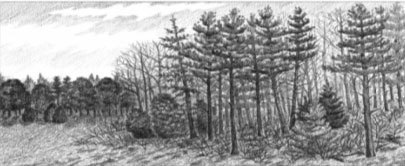 Eastern
White Pine is one of Maine’s most important tree species. Managing your woods
for white pine can provide you and your family lifelong benefits; from
excellent financial returns to aesthetic beauty, wildlife habit and
recreational opportunities. How you manage your woods
depends on your vision and goals. For example, stands can be managed for timber
production or other forest products, wildlife habitat, aesthetics, water
protection, backyard landscaping, or a combination of values. Whatever your
desired result, meeting with a Maine
Forest Service (MFS) District Forester to walk your land and talk about
your goals is an ideal way to get started.
White
pine stands contribute to both woodland owners’ and Maine’s
economic wellbeing. Maine holds the distinction of being the number
one white pine lumber producing state in the nation. It’s no surprise that
white pine is the official state tree for Maine.
White
pine grows in all localities in the state in a wide range of situations,
including heavy wet soils and sandy upland soils, but develops best on fertile,
well-drained soils. White pine trees can grow rapidly both in height and
diameter, adding an average of 1 foot or more in height each year. Annual
growth rings of an inch or more are common.
From a timber standpoint, the
goal is to produce trees with long, straight, branch-free stems, suitable for
manufacture into highly valued wood products such as clear, knot-free boards,
furniture stock and interior trim and molding. To encourage trees to compete
for light and grow tall, rather than to branch at lower levels, stands of white
pine should be prudently thinned as the trees grow to marketable size. Care
should be taken not to open the stand too rapidly, to protect against ice
damage and sun scalding. Periodic pruning of lower limbs on future crop trees
produces the higher grade logs most valued by mills.
Much has been written about the silviculture
[link to MFS Info Sheet # 9] of white pine. Getting professional advice from a
licensed forester about the appropriate timing for thinning, pruning and
regenerating white pine is very important. You can find out more by checking
out MFS
Information Sheet # 21, “Managing White Pine Stands in Maine.”
As
always, you can call the Maine Forest
Service for more information or assistance at 1 800 367-0223 (in state) or
(207) 287-2791, or e-mail forestinfo@maine.gov
|